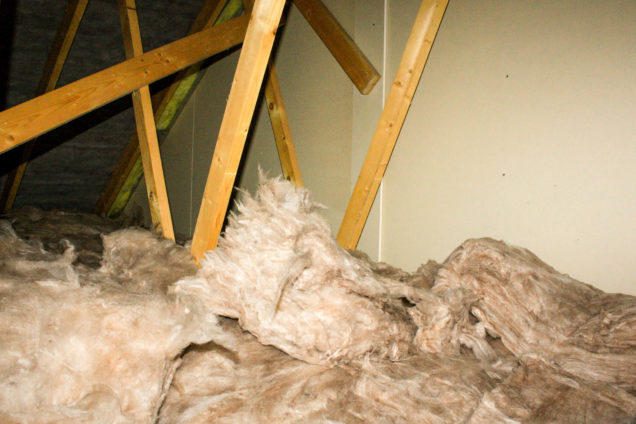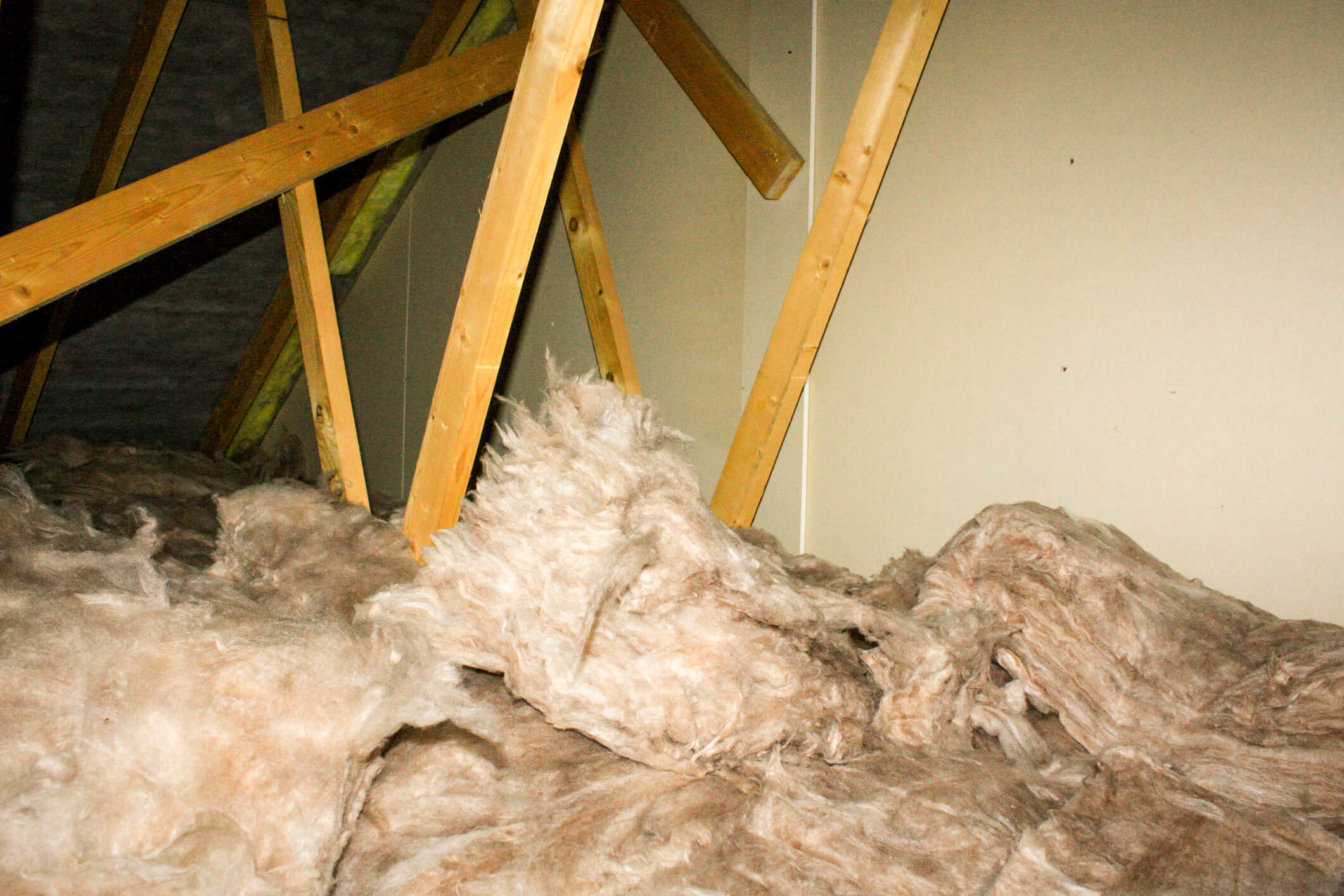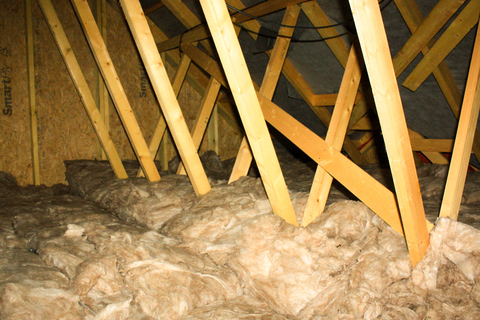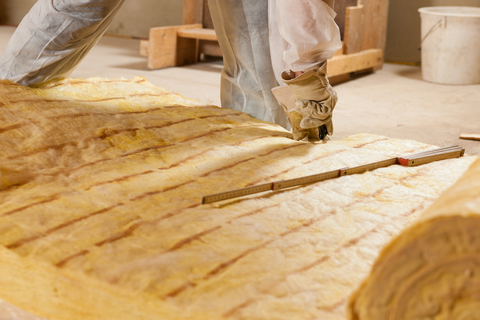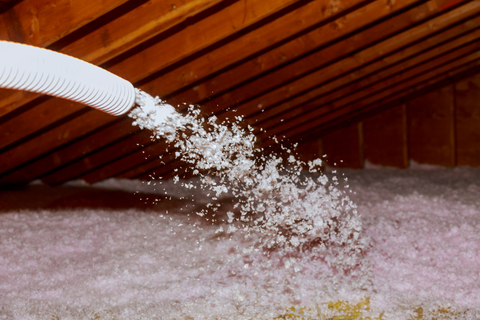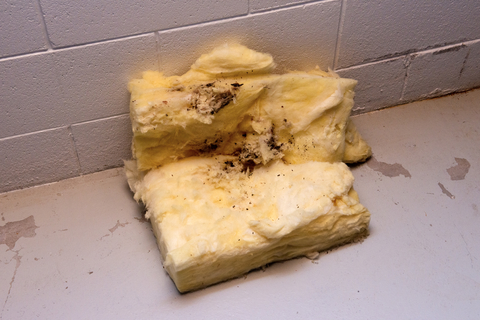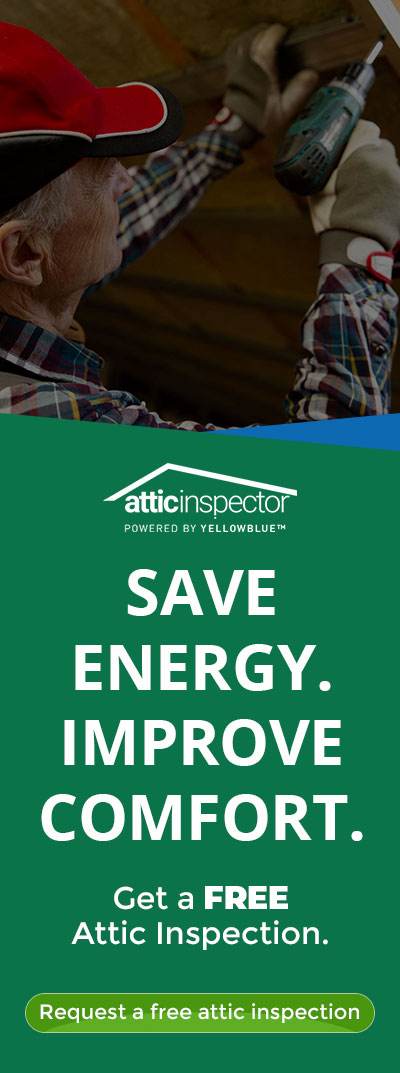What is attic insulation?
What do you imagine when you read the word ‘insulation’?
If you imagine the pink, cotton-candy fluff that hangs out in your attic, you’re on the right track. Many homeowners know what insulation looks like, but are unsure exactly how to know if it’s working. More importantly, they aren’t sure when it’s NOT working — and costing them money.
Insulation comes in a variety of different types and sizes. Insulation performs some of the most important functions but is often overlooked. Its main function is providing resistance to heat flow and helping to lower heating and cooling costs.
The Department of Energy lists nine different types of insulation on its website. Some forms are bulky and are comprised of fiberglass, wool, cellulose, and natural fibers. Other forms of insulation are sleek foils and rigid foam boards.
Each type of insulation has its pros and cons depending on the job. A certain type of insulation may be more effective than another. Regardless of its form, insulation’s role in reducing heating and cooling costs and improving home comfort is unparalleled.
Why is attic insulation important?
Insulation acts like a sweater to keep everything that’s surrounded by it warm and happy. Attic insulation regulates a large part of the home’s internal temperature. It provides a critical barrier to the elements and temperature changes year-round. The Department of Energy suggests attic insulation should have no less of an R-value of R-30. This guarantees home comfort throughout the seasons.
During colder months, insulation in the attic works to regulate the temperature inside of the home. It does this by retaining heat and keeping the cold out. During the summertime, insulation protects the home from the heat by keeping the house cool. Insulation helps retain the conditioned environment within the house and keeps air-conditioned rooms at a comfortable temperature.
Insulation is key to maintaining home comfort and helping you avoid wasting money on air conditioning costs. Acting as a barrier, insulation helps keep unwanted environmental toxins outside of your home.
When attic insulation decays or degrades, its effects start to be limited. When this happens, the internal temperature of the home may begin to fluctuate or become irregular.
Old and damaged insulation contributes significantly to the home’s overall energy efficiency. As a result, fluctuating temperatures can cause substantial increases in the energy bill. Keeping track of the condition of your attic insulation can dramatically affect your energy costs.
What are some common problems that can affect insulation?
Uneven blown insulation. Homeowners can rent a machine to install their own insulation. However, the material is rarely distributed evenly throughout the attic. This leads to hills and bald spots throughout. Uneven distribution of insulation dramatically reduces its effectiveness.
Areas of missing insulation at skylights. The enclosed shaft that runs through the attic to the skylight requires installation around it. Installed insulation batts in these areas are prone to loosening and falling onto the floor of the attic.
Missing insulation at repaired areas. This may sound like a silly one. Insulation is often moved during a repair and is never put back into place.
Compacted insulation. This problem may also sound silly, but it is common. Insulation loses its effectiveness when it is constantly being compressed by being walked on or having boxes stored on it loses its insulation ability.
Insufficient R-value. Over the years, fiberglass batt insulation gradually collapses and deteriorates. This lowers the insulation’s R-value. High R-value keeps the cozy, warm air in your home in the winter and keeps cool, refreshing air in your home during the summer.
No insulation in areas that have been converted to living spaces. It’s easy to forget that porches, carports, attic spaces, or garages that are remodeled require insulation.
No adequate insulation in kneewalls. Kneewalls are vertical walls between the house and the attic. These typically occur where ceiling heights change. Vaulted ceilings or skylight wells require proper installation.
Uninsulated attic access. Insulation at the attic access point is essential. A batt of fiberglass insulation can easily be attached to the piece of sheetrock that covers the access point.
What could damage my insulation?
As homes age, it is not uncommon for insulation issues to come to light. Homeowners often do not know that there is a problem with their installation until they go up into the attic to retrieve stored goods or clean the space. Insulation problems related to age include old and deteriorating insulation to fallen insulation within the attic’s interior walls.
Age. Insulation may also be affected by other factors such as harbored allergens, toxins, or mold. If left unaddressed, these problems have the potential to sicken your loved ones. These problems could also compromise the structural integrity of your home. Monitoring the insulation in the attic can dramatically lower energy costs and improve the health of your loved ones.
Pests. There is also a likelihood that pests have made their way (and their home) in your attic insulation. Pests like bugs, small critters, and bats consider attic insulation a safe, warm, and secure environment without disruption.
There is a high chance that pests are living in your attic if your attic is not used frequently, or has points that are weak and exposed to the elements. A telltale sign of a pest problem is the presence of scratching noises or unexplained movement in your attic. It is imperative to remove the damaged insulation once a pest problem is identified.
Ice dams. Ice dams occur in the wintertime when warm air rises to the top of your snow-covered roof. The warm air melts the snow at the top of the roof. Melted snow then flows down to the eaves and gutters where it then refreezes. The build-up of ice prevents proper drainage and results in water seeping back into the home. This water causes damage to walls, ceilings, insulation, and other areas.
If you are uncertain about the state of your attic insulation, it is important to take a look and see if there are any problems. Look for insulation that is damaged or aging. If you have been in your home for a few decades and haven’t touched your insulation for that entire time, it is a sure thing that you are going to need replacement attic insulation.
How do I fix my insulation problems?
Attic insulation replacement is a simple and quick process. It could take as little as a day to tear out old insulation to secure the attic and protect it from the elements.
Energy Star recommends hiring a home energy professional to perform a comprehensive energy audit. The right pro can locate potential safety hazards and pinpoint specific solutions for your home.
Yellowblue™ knows all about attic insulation. Yellowblue™ contractors are experienced and will work to ensure that your attic is happy and healthy. Contact your nearest independent authorized yellowblue™ dealers to help you optimize your attic insulation.

